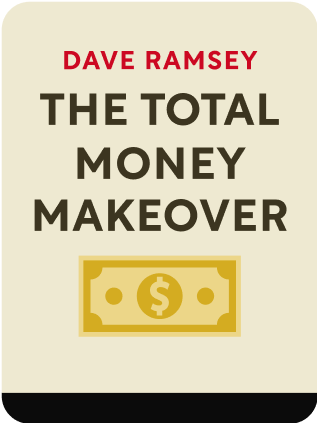

This article is an excerpt from the Shortform book guide to "The Total Money Makeover" by Dave Ramsey. Shortform has the world's best summaries and analyses of books you should be reading.
Like this article? Sign up for a free trial here .
What is baby step 3 of the Total Money Makeover program? How big of an emergency fund is enough?
Baby step 3 is to make sure you can cover your expenses for 3-6 months. This keeps you protected if something big happens, like losing your job.
Read more about baby step 3 of the Total Money Makeover program.
Baby Step 3: Boost Your Emergency Fund
At this point, you’ve eliminated debt other than your mortgage and have $1,000 cash for emergencies. You’re now in control of your income and have momentum. Baby step 3 is boosting your emergency fund to give you a cushion against big, life-disrupting problems like a job loss or medical bills.
Remember, major financial emergencies are inevitable in life, and if you use debt to cover them, you’ll be back to square one. Everyone needs an emergency fund large enough to cover three to six months of expenses, enabling you to manage for up to half a year without an income. In one survey, 49% said they couldn’t cover even a month’s expenses if they lost their income. That’s why you need to do baby step 3.
The amount in your emergency fund should be between $5,000 and $25,000.
For example, a frugal family with expenses of $3,000 a month might keep a minimum of $10,000 in an emergency fund. While $3,000 a month may not seem realistic, keep in mind that when you’ve eliminated debt and have adequate insurance coverage, it’s possible to live on much less than your income.
The exact amount you should save for emergencies depends on your situation. If your situation is unstable—for instance, if your job could be at risk—you need a larger emergency fund. Here are some rules of thumb:
- If you work on commission only or are self-employed, cover six months of expenses.
- If you’re single or a couple with one income, cover six months.
- If your job is unstable or your family has ongoing medical problems, also cover at least six months. In contrast, if you’re a tenured teacher or professor and plan to stay in that job, covering three months of expenses could suffice.
When faced with an emergency, pause and take a deep breath before drawing on your emergency fund. Don’t do anything until you and your spouse talk about it and agree on the solution. Then go one step further and sleep on it to be sure you haven’t overlooked anything.
Where to Put the Money
As noted in step #1 (create a $1,000 emergency fund), your emergency fund must be in the form of cash and easily accessible without any penalties.
The point isn’t investing the money to earn interest, it’s keeping it available and safe—so don’t put it someplace hard to tap into, like a mutual fund. A great option is a money market account with no penalties, and on which you can write checks. Your money will earn a little interest there but again, that’s not the objective of baby step 3.
As you change the way you handle money through the Total Money Makeover process, you’ll find yourself using your emergency fund less, for two reasons:
- Your monthly budget will be healthier and able to handle most things that come up.
- As you become more financially fit in general, your finances will be less easily upended. Problems that used to throw you for a loop are just inconveniences.
Aside: Don’t buy a home until you’ve completed this step of the money makeover; too many people buy a home before they’re ready financially (with no other debt and a full emergency fund). Further, you should save first (maybe years) for a substantial down payment or a cash purchase. More on this follows in Chapter 10.
Reaching the end of baby step 3 takes about two and a half years.

———End of Preview———
Like what you just read? Read the rest of the world's best book summary and analysis of Dave Ramsey's "The Total Money Makeover" at Shortform .
Here's what you'll find in our full The Total Money Makeover summary :
- The 7 steps to achieving financial stability (you'll love #7)
- A fool-proof plan for becoming debt-free
- How myths about debt and money are crippling your financial health






